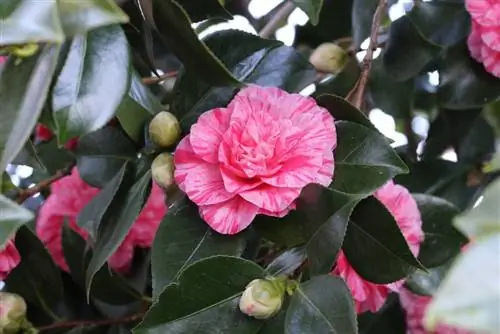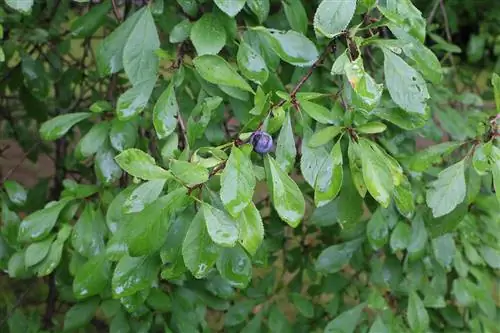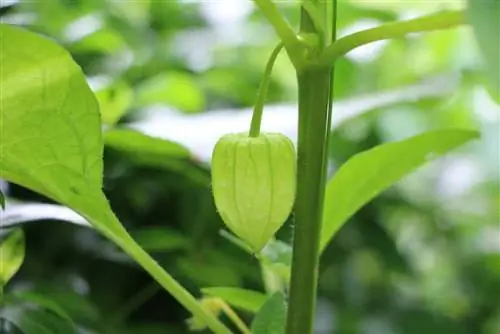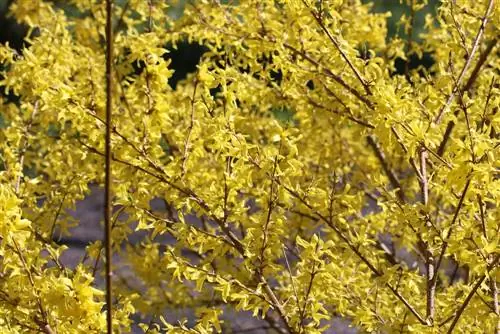- Author admin [email protected].
- Public 2023-12-17 03:39.
- Last modified 2025-01-24 12:45.
When the right time for pruning is depends largely on the growth and age of the plant. As a rule, the camellia only needs to be pruned occasionally as it grows extremely slowly. If pruned in a timely manner, the plant will be able to recover much more easily. This can then form new buds again on the pruned shoot.
When is the best time?
The decisive factors for good growth and attractive flowering are moderate warmth, a moist soil environment and a well-protected location. Camellias are winter bloomers and form their buds in midsummer. In the cool winter period, these buds mature and the flowering period begins, which can last until May, depending on the variety. The hardy camellia needs this cold period to produce flowers, which is why it is not suitable for keeping indoors. However, camellias thrive well in a pot on the terrace and balcony, but then a protected winter quarter is required.
- Basically only prune after flowering
- The ideal time is late spring
- Alternatively, cut in early summer
- Prune between May and July
- Prune before new growth begins
- Cutting too late prevents the buds from forming
- Do not prune extremely young specimens
- Observe the plant when the right time is
- Always prune individually and depending on the plant
- The correct time can vary depending on the variety
Note:
Did you know that cutting is still possible in August when new buds have not yet formed.
General data on pruning
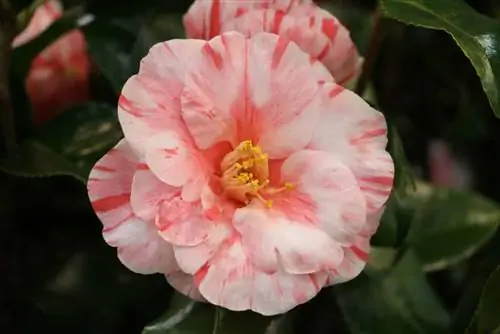
After the first flowering at the latest, the question arises as to whether the camellia needs pruning. Due to the low and slow growth, pruning should only be done carefully. In addition, there must be sufficient substance in the plant before the first pruning takes place. The evergreen tree can tolerate cutting, but only later in its life. In contrast to other plants, extreme pruning does not stimulate the camellia's growth in the long term.
Rather, the plant suffers unnecessarily and then only produces weak shoots and poor flowers. Younger, but already vigorously growing plants benefit from a topiary cut so that they can branch out well and grow into beautifully bushy shrubs. Older specimens can certainly be trimmed down more if they grow too much. When pruning, pay attention to the growth of the buds that form in the leaf axis. After pruning, all shoots should receive sufficient light.
- Cut only a little and properly
- Prune only very carefully and carefully
- Always cut back in small steps
- On beautifully growing specimens, only remove dead shoots
- Remove weakly growing and non-flowering wild shoots
- Approx. Cut 2 cm above the base of the leaf
- Short shoots that are too long by a maximum of 1/3 of the length
- Shoots should dry out, but bud growth should be preserved
- Eye over which the crop is made faces outward
- If possible, cut all shoots the same length
Interesting facts & patterning
As plants, camellias have a clear and structured structure, which is why pruning is not complicated and easy to do even for hobby gardeners. Camellias bloom from the growth the plants achieved the previous year. A shoot extends from one node to the next, from which the leaves grow. If the pruning is done correctly, a new shoot and new buds can grow from this spot without any problems. In this way, rainwater can drain away easily and no pathogenic germs accumulate on the cut surface. In general, most varieties are hardy camellias, but the Japanese camellia is an exception. This can only overwinter outdoors in very mild and low-lying regions. That's why the Japanese camellia is better cultivated in a pot. In winter we have to move to an unheated greenhouse or winter garden.
- Prune along the nodes
- Make it to the next side shoot
- Alternatively, prune to the next visible shoot point
- Sharp secateurs are extremely important
- Separate the branch with one cut
- Interface must not fray
- Set cutting direction vertically
- Ideally cut immediately after flowering
- Remove dead, diseased and rotten shoots regularly
- Cut back until he althy growth is visible
Maintenance and care pruning
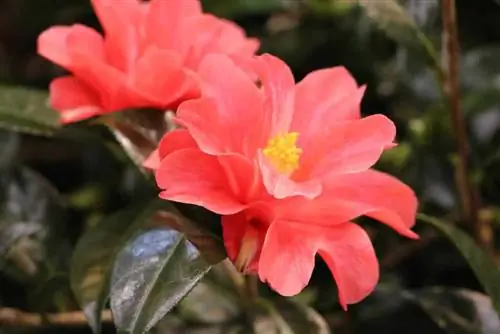
Pruning for maintenance and care is necessary for both younger and older plants. Only extremely young specimens should be allowed to rest in the early stages in order to be able to grow sufficiently. Younger plants benefit from regular thinning in order to develop attractive branching. This allows the camellia to grow into a bushy shrub. In addition, a properly carried out care cut supports the structure of the crown. However, the reasons for cutting back a he althy camellia should be limited and not excessive. Pruning that is too extreme can harm the he alth of the plant and affect its immune system. As a result, it is more susceptible to disease and pest infestation.
- Remove all dead branches regularly
- Also remove diseased shoots
- Also cut off spent flowers
- Also cut off areas affected by pests
- Remove balding branches equally
- Thinning out the inside of the crown, especially on larger specimens
- Pay attention to light transmission
- Reject branches that are too weak
- Always proceed very carefully
- Don't unnecessarily hinder bud growth
Rejuvenation cut
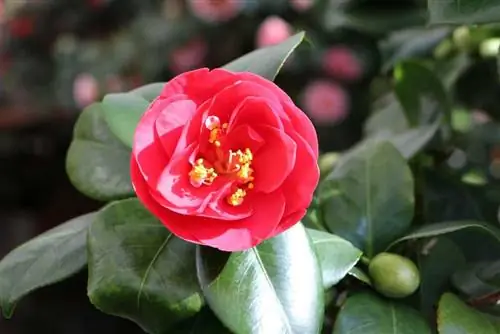
With advancing age, the plants can begin to grow extremely bulky and unsightly. If this is the case and the plant parts inside no longer receive light, then a rejuvenation cut is appropriate. In this way, the camellia is brought back into an attractive shape. The goal is to support camellia growth. Especially with this pruning, there must be enough leafy branches and twigs so that the plant can recover well afterwards. If they are large and strong specimens that grow in a good location, then deeper pruning is not a problem. With the right timing, the plants are supported in developing new buds in a short period of time. In this way, the camellias can enjoy long-term he althy growth.
- The goal is a rounded crown
- Remove individual shoots completely
- Make sure the growth direction is V-shaped
- Plant should taper harmoniously from top to bottom
- Support airy crown formation
- Always act moderately
- Never cut off too much
- Make rejuvenation cut step by step
- Possibly even over several years
- Be particularly careful with plants in pots

